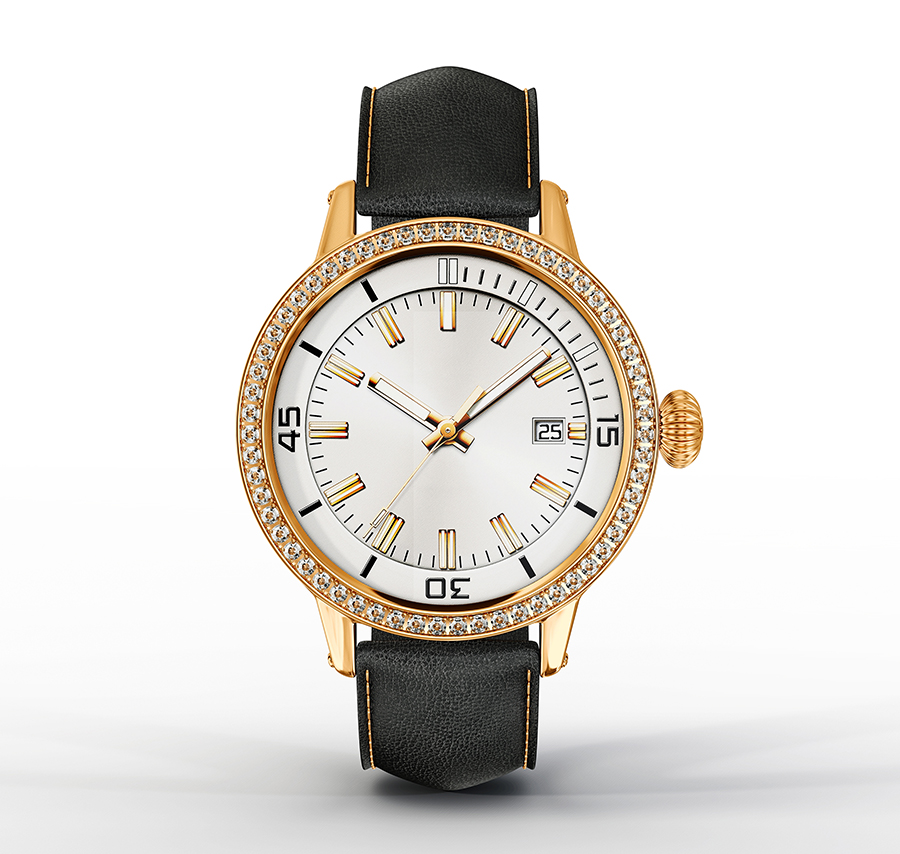Understanding Quality Work in Hair Restoration Part 1: The Role of the Physician
Too often when we have a consultation with a prospective surgeon we are focused entirely on “graft count”. The question goes: “How many grafts will you give me to make my baldness look better?” Clearly without enough “paint” to cover the canvas, the result will be poor. However, if quantity of hair transplanted is a given, then what makes the difference between a good job and a bad one. This two part article series will focus on the importance of quality work by the physician/surgeon and his/her team.

Like a quality swiss watch, quality is everything.
Why is quality so important beyond not making a result look like a doll’s head? Quality actually affects quantity, as will be elaborated in this article series. Consider that when one is born with approximately 100,000 hairs on the head and when visible baldness begins to become apparent already 50,000 hairs have been lost. With each transplant that can move approximately 5,000 hairs, the surgeon must make the result look like close to 50,000 or more hairs lost. Accordingly, because the transplant is not a 1:1 correction for lost hair the surgeon must judiciously and artistically make the 5,000 hairs appear like 50,000 hairs. The way that this is done will be discussed below.
Starting with the initial consultation, the physician must have the experience and insight into determining the suitability of a patient for hair restoration. Is this patient too young? Does he/she have enough donor hair to cover the desired baldness? Does the patient have a condition that would prevent a successful result like lupus or another type of scarring hair loss? Does the patient have a realistic understanding of future hair loss and how that hair transplant will age? All of these questions are important when a surgeon first approaches a patient for the possibility of a good hair transplant.
Starting with the hairline design, the physician must have a good artistic eye. The hairline must fit one’s gender, age, ethnicity, degree of hair loss/amount of donor hair available, and facial shape. Combining all of these elements is what distinguishes an excellent surgeon from a mediocre one. For example, a female hairline is very different from a male hairline: it is more rounded, closed with a central cowlick. An African male hairline is straighter and less rounded in shape. An Asian hairline is rounder to fit the facial shape and ethnicity. A younger individual should not be given an aggressive hairline that would not age well or that would deplete usable donor hair so that the result would not become unnatural over time. In addition, the shape of the scalp can alter the way that the hairline appears in a mirror. It is important for the surgeon designing the hairline constantly to check the shape of the hairline between the mirror and with direct view looking at the scalp.
Harvesting from the donor area comes next. If the surgeon mistreats the donor hair, the patient will have an unfavorable scar and a waste of donor hair for future sessions. It is imperative that the donor hair be treated with utmost priority. Starting with tumescent fluid, the surgeon raises the hair follicles far away from nerve and blood supply so that there is not protracted numbness or pain after the procedure. Very skilled and careful harvesting can lead to minimal transection (inadvertent splicing of the hairs) so that there is not wastage during the harvesting time. Not only can the surgeon waste precious hair by sloppy transection but also make wound closure compromised by all the embedded hairs remaining after harvesting. Finally a meticulous closure using two layers to take tension off the wound and a trichophytic closure in which 1 millimeter of skin is removed off the bottom lip allows hairs to grow through the scar—all of which contribute to a seamless and difficult to detect incision. Also waiting at least a year between harvesting can contribute to a relaxed incision for better healing the second time around as well.
The true artistry in hair restoration comes with what is known as recipient-site creation. The surgeon is able to distribute, angle, and design the actual “holes” where the hair grafts will be later inserted. Some surgeons rush through this part of the procedure or delegate it to their assistants. By doing so the core of an excellent result is thereby lost or severely compromised. The low angulation of the recipient sites along the hairline that are also tightly interlocked and angled forward without splaying allows for optimal hair density, combability, and naturalness. Recipient-site patterns can be truly what separates a superior surgeon from a good to average one.
In the next article we will discuss how important what the team contributes can be to the total product of a surgical procedure. Without an excellent team, the result of a hair transplant will greatly be diminished if not ruined.




